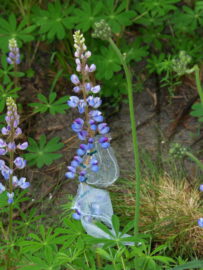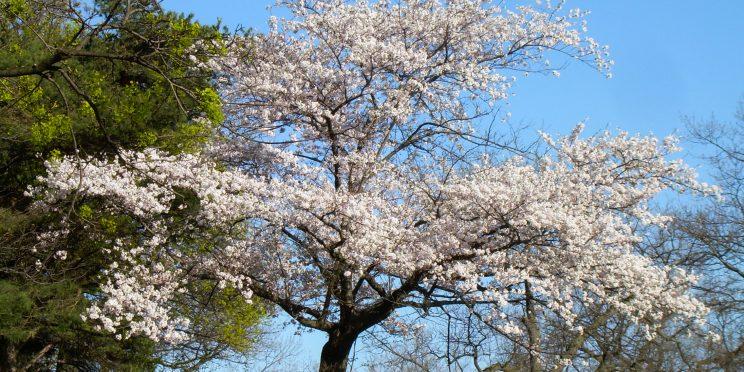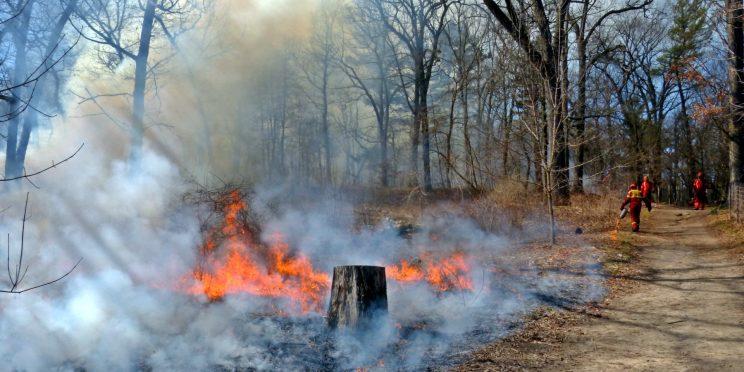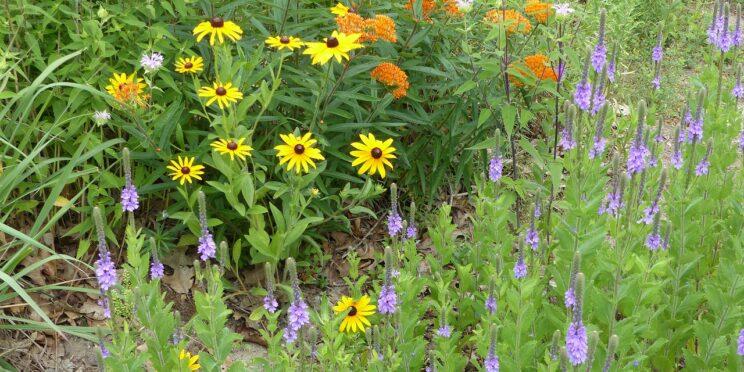Research in Toronto's High Park
Every year, numerous research studies and educational programs are conducted in High Park, ranging from elementary and high schools to post-secondary studies and post-graduate theses. For example, see the Vegetation Sampling Protocol study below.
Urban Forestry, City of Toronto, conducts monitoring in High Park on an ongoing basis, including:
Please see the relevant web pages for more details.
Research Available Online
Google Scholar has many articles available for viewing. Here are the results for searching habitat restoration "High Park" Toronto.
Citizen Science in High Park
Volunteers can make a meaningful contribution to scientific knowledge about High Park by participating in citizen science projects, either on their own or through an organized project.
Here are some examples of ongoing studies taking place in High Park.
- High Park Nature Centre's iNaturalist Project
- Annual Christmas Bird Count
- Bird sightings are maintained through eBird
- Annual High Park Moth Night
- High Park Moth Study on iNaturalist.ca
- High Park Hawk Watch
- High Park Nighthawk Watch
- Toronto Centre Butterfly Count - High Park Results
- Bat Research
- Wild Bee Club. Join host Susan Frye, a PhD candidate from the University of Toronto, to monitor native bees.
- Herp sightings are reported to the Ontario Reptile and Amphibian Atlas
To find out how you can contribute, follow the links above or contact High Park Nature.
Featured Research

High Park Nature Centre Project
Our goal is to collect and organize observations within High Park in Toronto, Ontario. This includes all plants, mammals, insects, fungi and any other wild living things you can find.
Help us form an updated inventory of sightings that will aid in future education and research, and help to give us all a better understanding of the diversity and abundance of life within these 399 acres.
VEGETATION SAMPLING PROTOCOL
City of Toronto Urban Forestry is working in partnership with the University of Toronto's Faculty of Forestry to establish an ecological monitoring program for Toronto's ravines and natural areas.
Monitoring began in 2019 using the Vegetation Sampling Protocol (VSP). This protocol combines proven and widely applied vegetation sampling methods. VSP is currently being used by several municipalities across southern Ontario, strengthening collaboration across multiple agencies.
The comprehensive vegetation monitoring will look at tree, shrub and herbaceous composition within each plot. The establishment of these plot locations will allow for future monitoring and evaluation of ecosystem changes. There are currently 10 VSP sites within High Park with 304 additional sites throughout Toronto.
For other University of Toronto Faculty of Forestry research, see the Toronto Ravine Revitalization Study: study details and project website.
PHOTO: VEGETATION SAMPLING PROTOCOL IN HIGH PARK, 2019 ©MATT FORSYTHE

Benthic Invertebrate Sampling, West Nile Virus Monitoring
Toronto and Region Conservation Authority samples water bodies to test for West Nile virus. Here are the results of a sample taken at Grenadier Pond in June 2012. It was collected with a D-frame net along the bank of the pond. The collection site is near the south-west corner of the pond. There are different ways to collect quantitative samples. This one was a presence/absence type of sample. (It does not comment on the presence/absence of West Nile virus.)
More about TRCA's monitoring programs.
More about West Nile virus status and control measures in Toronto.
Restoring Ecological Function of Littoral Macrophytes in Grenadier Pond
Thesis by Christine Tu. Evaluating the Lake Management Approach, Applied Biomanipulation Techniques and Progress in Restoring Ecological Function of Littoral Macrophytes in Grenadier Pond, Canada, 2000

Assessing Wild Lupine’s Reproductive Success through its Distribution
Research project by Maggie Blondeau, McGill University (in progress summer 2022).
Wild Lupine, or Lupinus perennis, is a perennial flowering legume that can be found in Eastern North America, all the way to the American Mid-West. Little is known about this species' ability to reproduce successfully in northern, Canadian populations. My project aims to determine how successful northern populations (including High Park) are at reproducing compared to those near the core of its distribution.

Links provided by Dr. Dawn Bazely, Faculty in Ecology and Evolutionary Biology, York University
- How to Tell if Your Restoration Project is successful, A presentation by Dr. Dawn Bazely to the High Park Stewards, Jan 24, 2015.
- Why don’t ecologists get more respect? Dawn R. Bazely Biology Department, York University, Toronto Wed 29 Oct 2014, Carolinian Canada Ecoystem Recovery Forum, Royal Botanic Gardens, Hamilton, ON, Canada.
- Invasive Plants of Canadian Woodlands – Scientific Challenges. Bazely, D. R., Firanski, J. C. and Koh, S. 2004.
- A study of prescribed burns, tree and shrub layer in oak savanna plant communities in Southern Ontario: Pinery Provincial Park, Rondeau Provincial Park and Point Pelee National Park. Tagliavia, C., Bazely, D.R., and Koh, S. 2002.
- The Distribution and Abundance of Fire-scarred Trees in Pinery Provincial Park, Ontario, Canada. Bazely, D. R., Bravo, D., Aryaie, M., Caportoto, A., Chan, C., Kharouba, H., Nogal, R., Purdy, T. and Etwell, T. 2006.
Wild Bee Research
- Red Bud Pollination by Solitary Bees. Multi-year study led by University of Toronto PhD Candidate, Charlotte de Keyzer. See study website.
- Bee research by Scott MacIvor - Assistant Professor of Urban Ecology, UTSC. See publications.

Rare Beetle found in High Park
In 2005, a British scientist, Paul F. Whitehead, found a tiny rare tenebrionid beetle, Pentaphyllus testaceus in a dead stump of Black Oak in High Park - the first North American record of a species that is on the Red List in Europe. He reported his findings in the Entomologist's Monthly Magazine, 27th July, 2007 Vol. 143, a British scientific journal.
Karner Blue Butterfly Recovery
- Assessing Wild Lupine Habitat in Ontario, Canada, for the Feasibility of Reintroduction of the Karner Blue Butterfly. Masters Thesis by Jesse Jarvis, Dec. 2014
- Recovery Strategy for the Karner Blue (Lycaeides melissa samuelis), Frosted Elfin (Callophrys irus), and Eastern Persius Duskywing (Erynnis persius persius) in Canada [Proposed] - 2017.





















